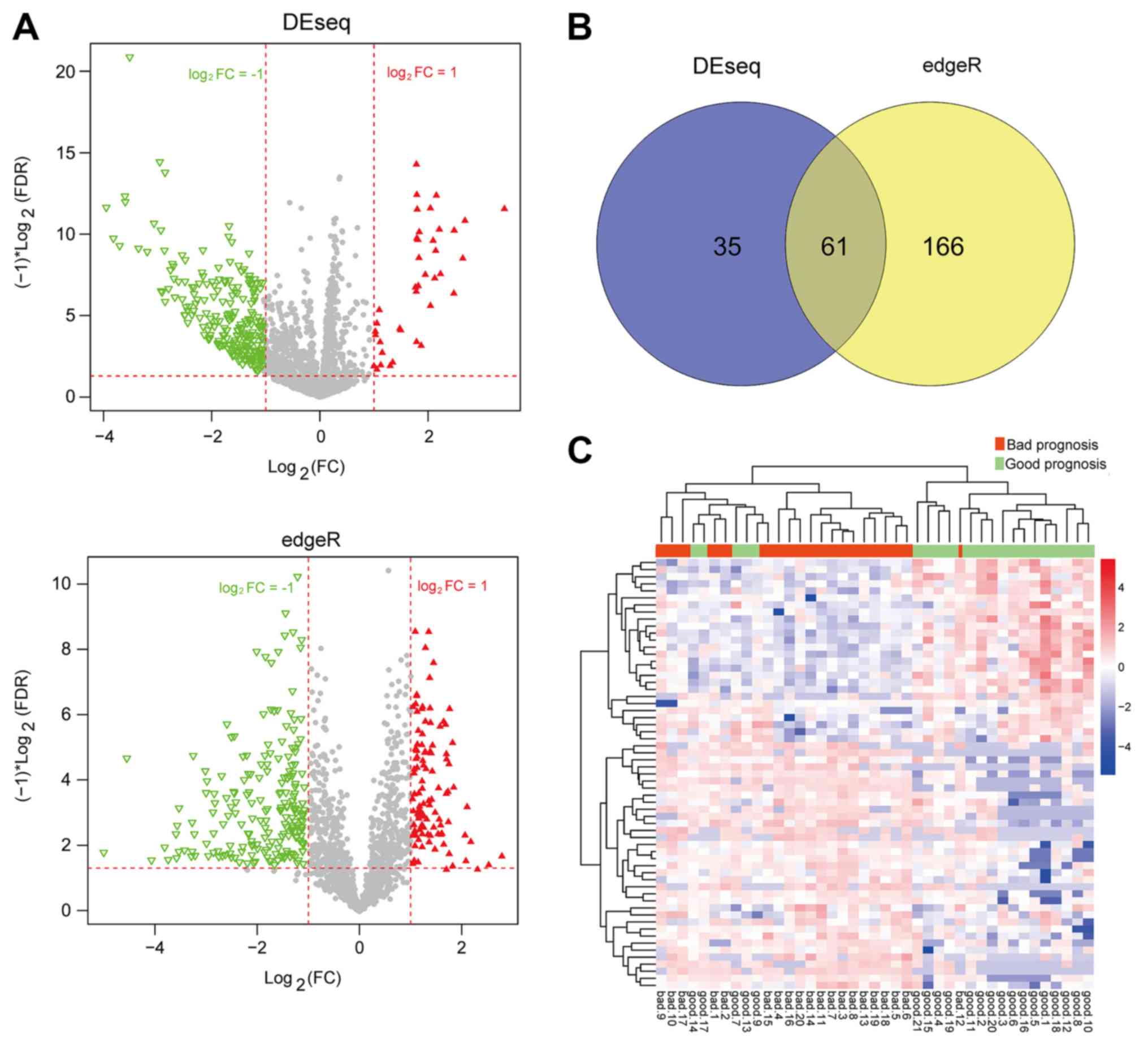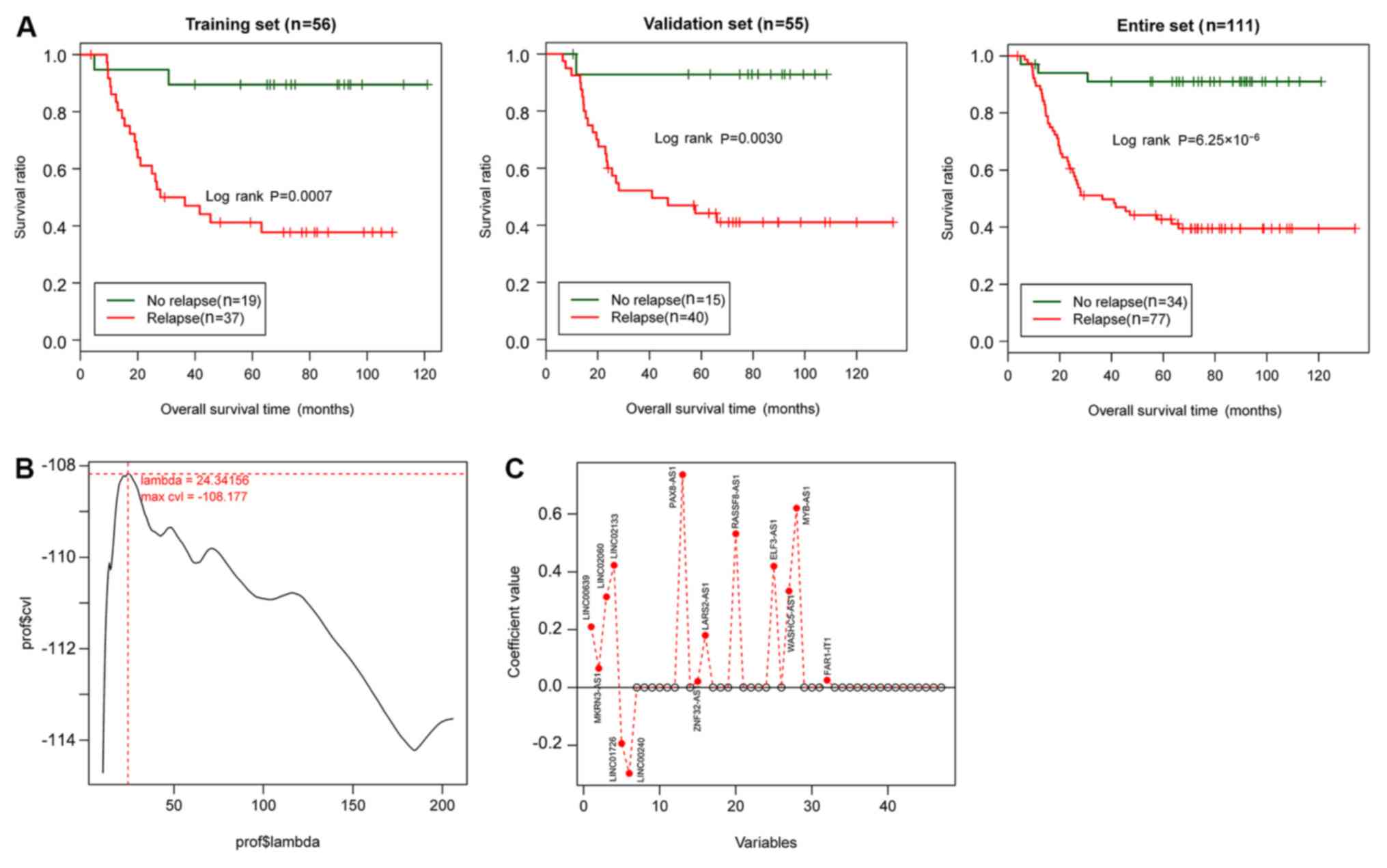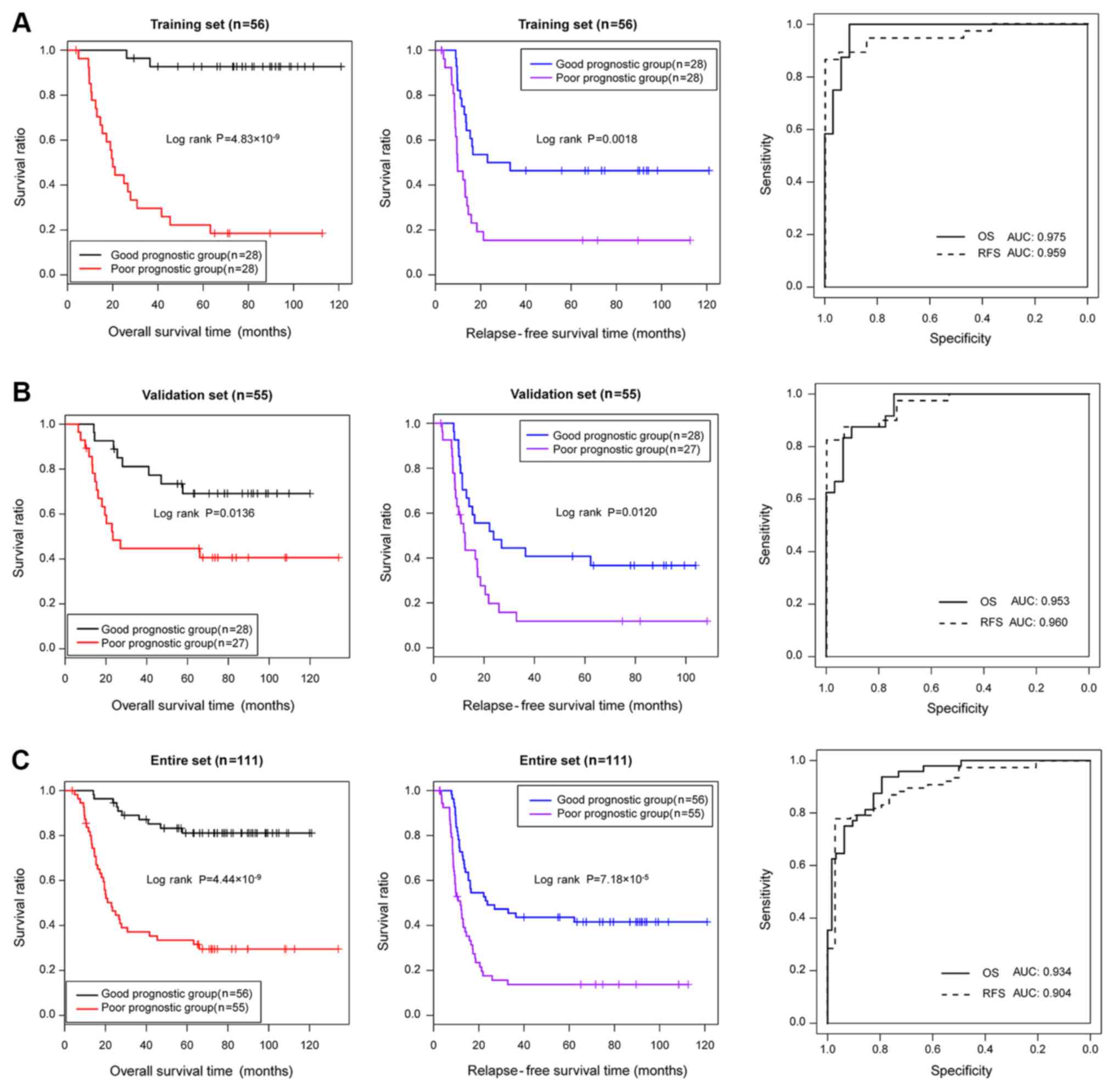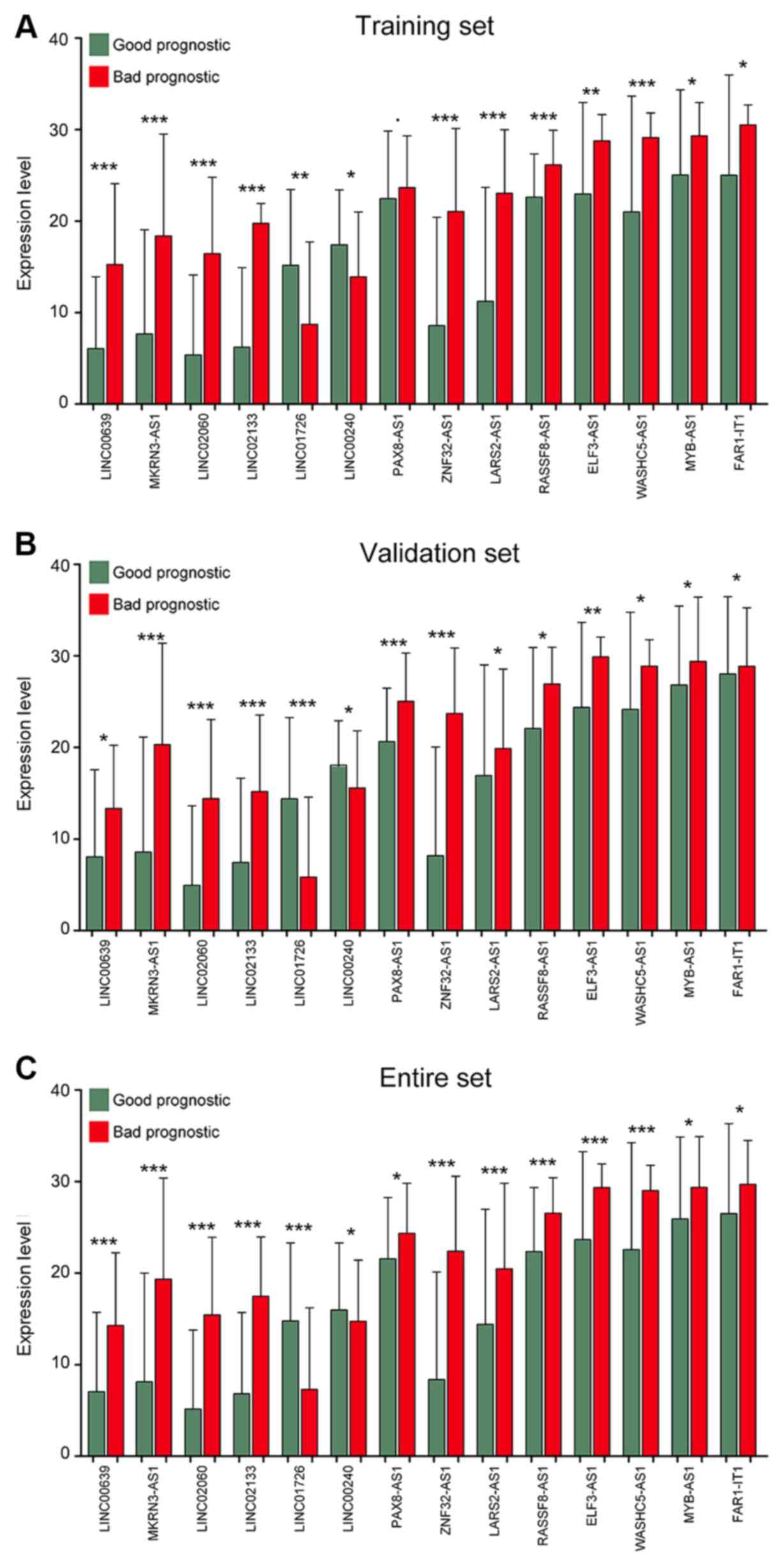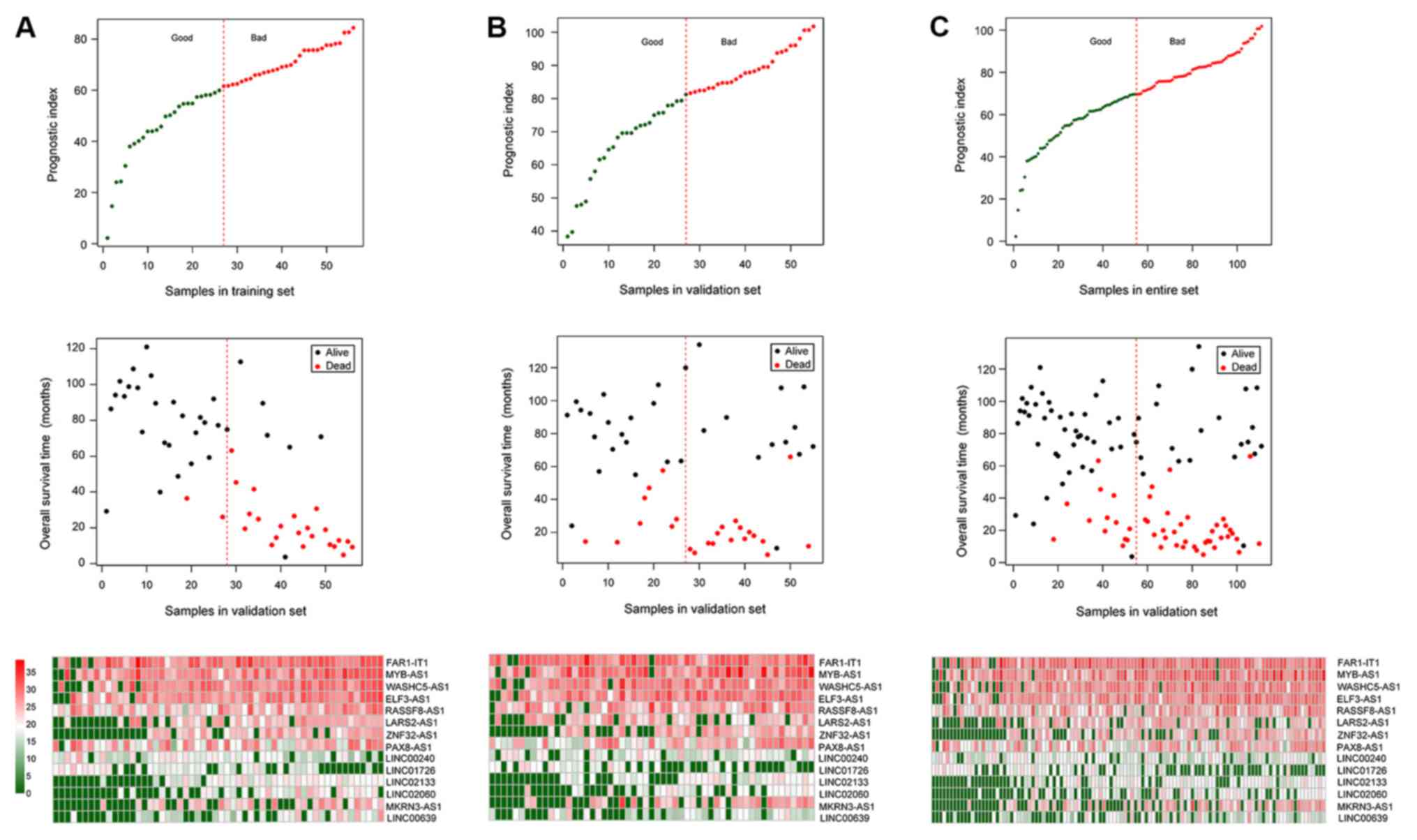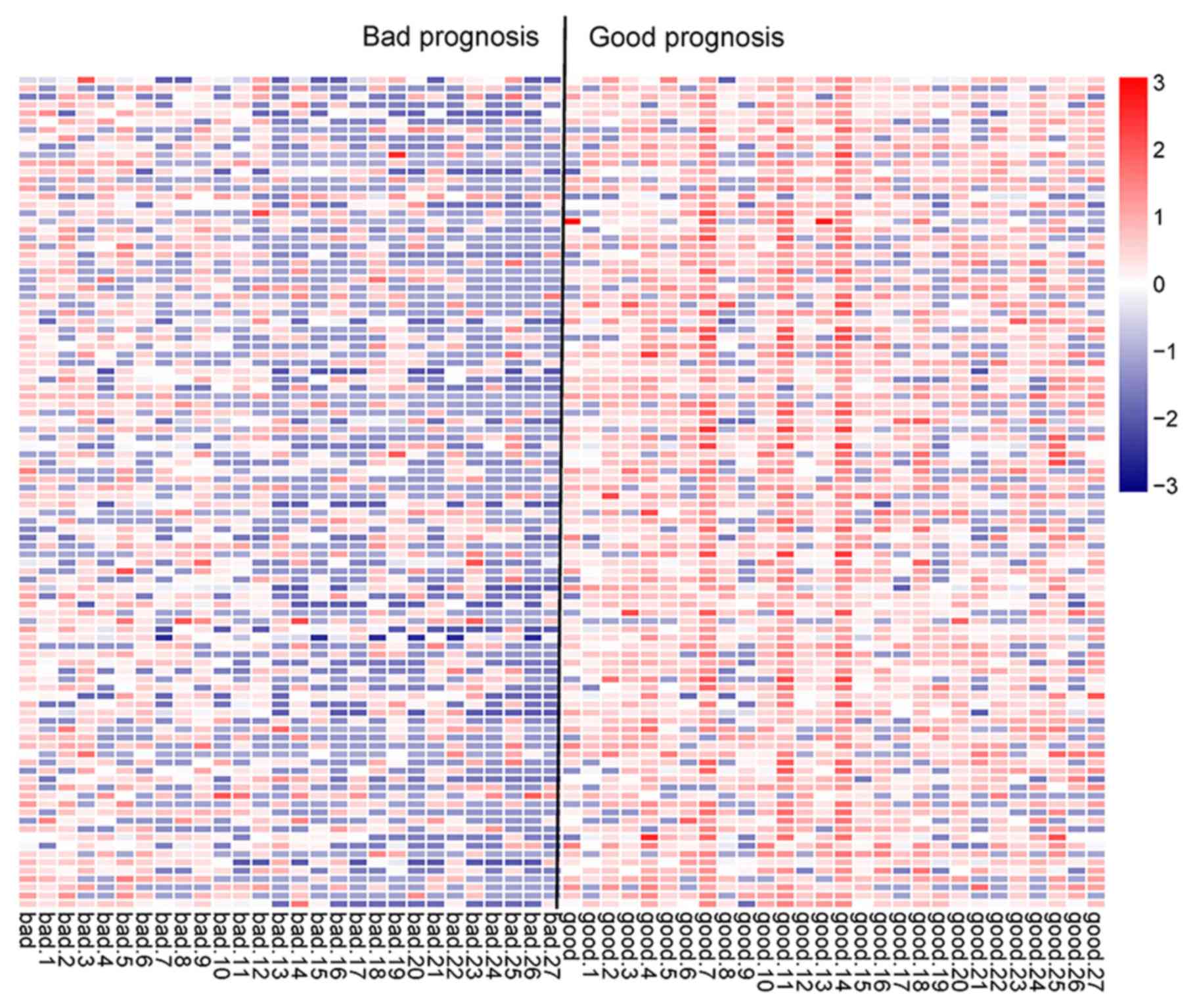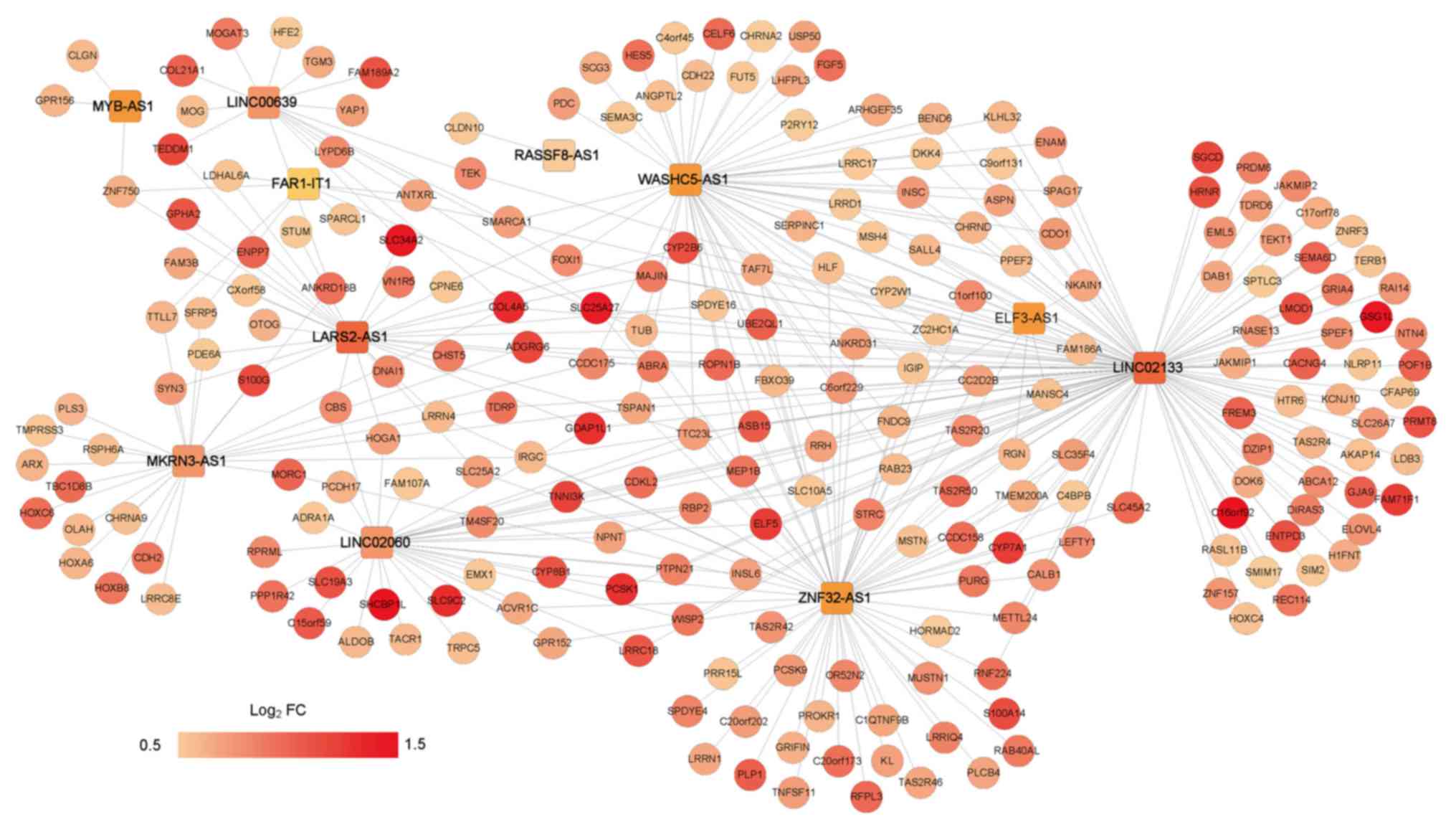|
1
|
Clarkson BD: Acute myelocytic leukemia in
adults. Cancer. 30:1572–1582. 2015.
|
|
2
|
Döhner H, Weisdorf DJ and Bloomfield CD:
Acute myeloid leukemia. N Engl J Med. 373:1136–1152.
2015.PubMed/NCBI View Article : Google Scholar
|
|
3
|
Kootte AM, Thompson J and Bruijn JA: Acute
myelocytic leukemia with acute aortic occlusion as presenting
symptom. Acta Haematol. 75:120–121. 2009.
|
|
4
|
Pyatt DW, Aylward LL and Hays SM: Is age
an independent risk factor for chemically induced acute myelogenous
leukemia in children? J Toxicol Environ Health B Crit Rev.
10:379–400. 2007.PubMed/NCBI View Article : Google Scholar
|
|
5
|
Belson M, Kingsley B and Holmes A: Risk
factors for acute leukemia in children: A review. Environ Health
Perspect. 115:138–145. 2007.PubMed/NCBI View
Article : Google Scholar
|
|
6
|
Deschler B and Lübbert M: Acute myeloid
leukemia: Epidemiology and etiology. Cancer. 107:2099–2107.
2010.
|
|
7
|
GBD 2015 Mortality and Causes of Death
Collaborators: Global, regional, and national life expectancy,
all-cause mortality, and cause-specific mortality for 249 causes of
death, 1980-2015: A systematic analysis for the Global Burden of
Disease Study 2015. Lancet 388: 1459-1544, 2016.
|
|
8
|
Angrand PO, Vennin C, Le Bourhis X and
Adriaenssens E: The role of long non-coding RNAs in genome
formatting and expression. Front Genet. 6(165)2015.PubMed/NCBI View Article : Google Scholar
|
|
9
|
Garzon R, Volinia S, Papaioannou D,
Nicolet D, Kohlschmidt J, Yan PS, Mrózek K, Bucci D, Carroll AJ,
Baer MR, et al: Expression and prognostic impact of lncRNAs in
acute myeloid leukemia. Proc Natl Acad Sci USA. 111:18679–18684.
2014.PubMed/NCBI View Article : Google Scholar
|
|
10
|
Hao S and Shao Z: HOTAIR is upregulated in
acute myeloid leukemia and that indicates a poor prognosis. Int J
Clin Exp Pathol. 8:7223–7228. 2015.PubMed/NCBI
|
|
11
|
Wu S, Zheng C, Chen S, Cai X, Shi Y, Lin B
and Chen Y: Overexpression of long non-coding RNA HOTAIR predicts a
poor prognosis in patients with acute myeloid leukemia. Oncol Lett.
10:2410–2414. 2015.PubMed/NCBI View Article : Google Scholar
|
|
12
|
Sun J, Hu J, Li W and Sun Y: A novel
suppressive long noncoding RNA within the IGF1R Gene locus is
imprinted in acute myelocytic leukemia. Blood.
124(3592)2014.PubMed/NCBI View Article : Google Scholar
|
|
13
|
Zhao TF, Jia HZ, Zhang ZZ, Zhao XS, Zou
YF, Zhang W, Wan J and Chen XF: LncRNA H19 regulates ID2 expression
through competitive binding to hsa-miR-19a/b in acute myelocytic
leukemia. Mol Med Rep. 16:3687–3693. 2017.PubMed/NCBI View Article : Google Scholar
|
|
14
|
Nie Y, Zhou L, Wang H, Chen N, Jia L, Wang
C, Wang Y, Chen J, Wen X, Niu C, et al: Profiling the epigenetic
interplay of lncRNA RUNXOR and oncogenic RUNX1 in breast cancer
cells by gene in situ cis-activation. Am J Cancer Res. 9:1635–1649.
2019.PubMed/NCBI
|
|
15
|
Wang H, Guo R, Hoffman AR, Hu J and Li W:
Effect of long noncoding RNA RUNXOR on the epigenetic regulation of
RUNX1 in acute myelocytic leukemia. J Brazilian Soc Mechanical Sci
Engineering. 25:341–346. 2015.
|
|
16
|
Wang F, Tian X, Zhou J, Wang G, Yu W, Li
Z, Fan Z, Zhang W and Liang A: A three-lncRNA signature for
prognosis prediction of acute myeloid leukemia in patients. Mol Med
Rep. 18:1473–1484. 2018.PubMed/NCBI View Article : Google Scholar
|
|
17
|
Lee SH, Chiu YC, Li YH, Lin CC, Hou HA,
Chou WC and Tien HF: High expression of dedicator of cytokinesis 1
(DOCK1) confers poor prognosis in acute myeloid leukemia.
Oncotarget. 8:72250–72259. 2017.PubMed/NCBI View Article : Google Scholar
|
|
18
|
Anders S and Huber W: Differential
expression analysis for sequence count data. Genome Biol.
11(R106)2010.PubMed/NCBI View Article : Google Scholar
|
|
19
|
Robinson M, Mccarthy D and Smyth GK:
edgeR: Differential expression analysis of digital gene expression
data. J Hospice Palliative Nurs. 4:206–207. 2010.
|
|
20
|
Chen LP, Wang H, Zhang Y, Chen QX, Lin TS,
Liu ZQ and Zhou YY: Robust analysis of novel mRNA-lncRNA cross talk
based on ceRNA hypothesis uncovers carcinogenic mechanism and
promotes diagnostic accuracy in esophageal cancer. Cancer Manag
Res. 11:347–358. 2018.PubMed/NCBI View Article : Google Scholar
|
|
21
|
Perron AM, Girolimetti G, Procaccini M,
Marchio L, Livi A, Borghese G, Porcelli AM, De Iaco P and Gasparre
G: Potential for mitochondrial DNA sequencing in the differential
diagnosis of gynaecological malignancies. Int J Mol Sci. 19(pii:
E2048)2018.PubMed/NCBI View Article : Google Scholar
|
|
22
|
He JH, Han ZP, Zou MX, Wang L, Lv YB, Zhou
JB, Cao MR and Li YG: Analyzing the LncRNA, miRNA, and mRNA
regulatory Network in prostate cancer with Bioinformatics Software.
J Comput Biol. 25:146–157. 2018.PubMed/NCBI View Article : Google Scholar
|
|
23
|
Wang L, Cao C, Ma Q, Zeng Q, Wang H, Cheng
Z, Zhu G, Qi J, Ma H, Nian H and Wang Y: RNA-seq analyses of
multiple meristems of soybean: Novel and alternative transcripts,
evolutionary and functional implications. BMC Plant Biol.
14(169)2014.PubMed/NCBI View Article : Google Scholar
|
|
24
|
Wang P, Wang Y, Hang B, Zou X and Mao JH:
A novel gene expression-based prognostic scoring system to predict
survival in gastric cancer. Oncotarget. 7:55343–55351.
2016.PubMed/NCBI View Article : Google Scholar
|
|
25
|
Goeman JJ: L1 penalized estimation in the
Cox proportional hazards model. Biom J. 52:70–84. 2010.PubMed/NCBI View Article : Google Scholar
|
|
26
|
Ranstam J and Cook JA: Kaplan-meier curve.
Br J Surg. 104(442)2017.PubMed/NCBI View Article : Google Scholar
|
|
27
|
Kaushal B, Jain K and Sharma SK:
Estimation of area under receiver operating characteristic curve
for Bi-Pareto and Bi-Two parameter exponential models. Open J
Statistics. 4:1–10. 2014.
|
|
28
|
Hauke J and Kossowski T: Comparison of
values of Pearson's and Spearman's correlation coefficients on the
same sets of data. Quaestiones Geographicae. 30:87–93. 2011.
|
|
29
|
Tilford CA and Siemers NO: Gene set
enrichment analysis. Methods Mol Biol. 563:99–121. 2009.PubMed/NCBI View Article : Google Scholar
|
|
30
|
Servant N, Roméjon J, Gestraud P, La Rosa
P, Lucotte G, Lair S, Bernard V, Zeitouni B, Coffin F,
Jules-Clément G, et al: Bioinformatics for precision medicine in
oncology: Principles and application to the SHIVA clinical trial.
Front Genet. 5(152)2014.PubMed/NCBI View Article : Google Scholar
|
|
31
|
Zhao X, Li Y and Wu H: A novel scoring
system for acute myeloid leukemia risk assessment based on the
expression levels of six genes. Int J Mol Med. 42:1495–1507.
2018.PubMed/NCBI View Article : Google Scholar
|
|
32
|
Li S, Bian H, Cao Y, Juan C, Cao Q, Zhou G
and Fang Y: Identification of novel lncRNAs involved in the
pathogenesis of childhood acute lymphoblastic leukemia. Oncol Lett.
17:2081–2090. 2019.PubMed/NCBI View Article : Google Scholar
|
|
33
|
Yin X, Huang S, Zhu R, Fan F, Sun C and Hu
Y: Identification of long non-coding RNA competing interactions and
biological pathways associated with prognosis in pediatric and
adolescent cytogenetically normal acute myeloid leukemia. Cancer
Cell Int. 18(122)2018.PubMed/NCBI View Article : Google Scholar
|
|
34
|
Rossi G, Minervini MM, Carella AM, Melillo
L and Cascavilla N: Wilms' tumor gene (WT1) expression and minimal
residual disease in acute myeloid leukemia. In: van den
Heuvel-Eibrink MM (ed), Wilms Tumor, Brisbane (AU), Codon
Publications, 2016.
|
|
35
|
Siehl JM, Thiel E, Heufelder K, Snarski E,
Schwartz S, Mailänder V and Keilholz U: Possible regulation of
Wilms' tumour gene 1 (WT1) expression by the paired box genes PAX2
and PAX8 and by the haematopoietic transcription factor GATA-1 in
human acute myeloid leukaemias. Br J Haematol. 123:235–242.
2003.PubMed/NCBI View Article : Google Scholar
|
|
36
|
Han J, Zhou W, Jia M, Wen J, Jiang J, Shi
J, Zhang K, Ma H, Liu J, Ren J, et al: Expression quantitative
trait loci in long non-coding RNA PAX8-AS1 are associated with
decreased risk of cervical cancer. Mol Genet Genomics.
291:1743–1748. 2016.PubMed/NCBI View Article : Google Scholar
|
|
37
|
Bahari G, Hashemi M, Naderi M,
Sadeghi-Bojd S and Taheri M: Long non-coding RNA PAX8-AS1
polymorphisms increase the risk of childhood acute lymphoblastic
leukemia. Biomed Rep. 8:184–190. 2018.PubMed/NCBI View Article : Google Scholar
|
|
38
|
Ramaswamy K, Forbes L, Minuesa G, Gindin
T, Brown F, Kharas MG, Krivtsov AV, Armstrong SA, Still E, de
Stanchina E, et al: Peptidomimetic blockade of MYB in acute myeloid
leukemia. Nat Commun. 9(110)2018.PubMed/NCBI View Article : Google Scholar
|
|
39
|
Lahortiga I, De Keersmaecker K, Van
Vlierberghe P, Graux C, Cauwelier B, Lambert F, Mentens N, Beverloo
HB, Pieters R, Speleman F, et al: Duplication of the MYB oncogene
in T cell acute lymphoblastic leukemia. Nat Genet. 39:593–595.
2007.PubMed/NCBI View
Article : Google Scholar
|
|
40
|
Mets E, Van der Meulen J, Van Peer G,
Boice M, Mestdagh P, Van de Walle I, Lammens T, Goossens S, De
Moerloose B, Benoit Y, et al: MicroRNA-193b-3p acts as a tumor
suppressor by targeting the MYB oncogene in T-cell acute
lymphoblastic leukemia. Leukemia. 29:798–806. 2015.PubMed/NCBI View Article : Google Scholar
|
|
41
|
Shuang Y, Ning Q, Zhang G, Hong S, Zhen W
and Li Y: Construction of differential mRNA-lncRNA crosstalk
networks based on ceRNA hypothesis uncover key roles of lncRNAs
implicated in esophageal squamous cell carcinoma. Oncotarget.
7:85728–85740. 2016.PubMed/NCBI View Article : Google Scholar
|
|
42
|
Li K, Gao B, Li J, Chen H, Li Y, Wei Y,
Gong D, Gao J, Zhang J, Tan W, et al: ZNF32 protects against
oxidative stress-induced apoptosis by modulating C1QBP
transcription. Oncotarget. 6:38107–38126. 2015.PubMed/NCBI View Article : Google Scholar
|
|
43
|
Kai L, Bo G, Jun L, Chen H, Li Y, Wei Y,
Gong D, Gao J, Zhang J, Tan W, et al: ZNF32 protects against
oxidative stress-induced apoptosis by modulating C1QBP
transcription. Oncotarget. 6:38107–38126. 2015.PubMed/NCBI View Article : Google Scholar
|
|
44
|
Zhang L, Wang JH, Liang RX, Huang ST, Xu
J, Yuan LJ, Huang L, Zhou Y, Yu XJ, Wu SY, et al: RASSF8
downregulation promotes lymphangiogenesis and metastasis in
esophageal squamous cell carcinoma. Oncotarget. 6:34510–34524.
2015.PubMed/NCBI View Article : Google Scholar
|
|
45
|
Yeung TL, Leung CS, Wong KK,
Gutierrez-Hartmann A, Kwong J, Gershenson DM and Mok SC: ELF3 is a
negative regulator of epithelial-mesenchymal transition in ovarian
cancer cells. Oncotarget. 8:16951–16963. 2017.PubMed/NCBI View Article : Google Scholar
|
|
46
|
Harburg GC and Hinck L: Navigating breast
cancer: Axon guidance molecules as breast cancer tumor suppressors
and oncogenes. J Mammary Gland Biol Neoplasia. 16:257–270.
2011.PubMed/NCBI View Article : Google Scholar
|
|
47
|
Kerjan G and Moreaufauvarque C: The brain
within the tumor: New roles for axon guidance molecules in cancers.
Cell Death Differ. 12:1044–1056. 2005.PubMed/NCBI View Article : Google Scholar
|
|
48
|
Neufeld G, Mumblat Y, Smolkin T, Toledano
S, Nir-Zvi I, Ziv K and Kessler O: The role of the semaphorins in
cancer. Cell Adh Migr. 10:652–674. 2016.PubMed/NCBI View Article : Google Scholar
|
|
49
|
Rolny C, Capparuccia L, Casazza A, Mazzone
M, Vallario A, Cignetti A, Medico E, Carmeliet P, Comoglio PM and
Tamagnone L: The tumor suppressor semaphorin 3B triggers a
prometastatic program mediated by interleukin 8 and the tumor
microenvironment. J Exp Med. 205:1155–1171. 2008.PubMed/NCBI View Article : Google Scholar
|
|
50
|
Minke KS, Staib P, Puetter A, Gehrke I,
Gandhirajan RK, Schlösser A, Schmitt EK, Hallek M and Kreuzer KA:
Small molecule inhibitors of WNT signaling effectively induce
apoptosis in acute myeloid leukemia cells. Eur J Haematol.
82:165–175. 2010.PubMed/NCBI View Article : Google Scholar
|
|
51
|
Mikesch JH, Steffen B, Berdel WE, Serve H
and Müller-Tidow C: The emerging role of Wnt signaling in the
pathogenesis of acute myeloid leukemia. Leukemia. 21:1638–1647.
2007.PubMed/NCBI View Article : Google Scholar
|
|
52
|
Pehlivan M, Çalışkan C, Yüce Z and Sercan
HO: Secreted Wnt antagonists in leukemia: A road yet to be paved.
Leuk Res. 69:24–30. 2018.PubMed/NCBI View Article : Google Scholar
|
|
53
|
Valencia A, Romángómez J, Cervera J, Such
E, Barragán E, Bolufer P, Moscardó F, Sanz GF and Sanz MA: Wnt
signaling pathway is epigenetically regulated by methylation of Wnt
antagonists in acute myeloid leukemia. Leukemia. 23:1658–1666.
2009.PubMed/NCBI View Article : Google Scholar
|















